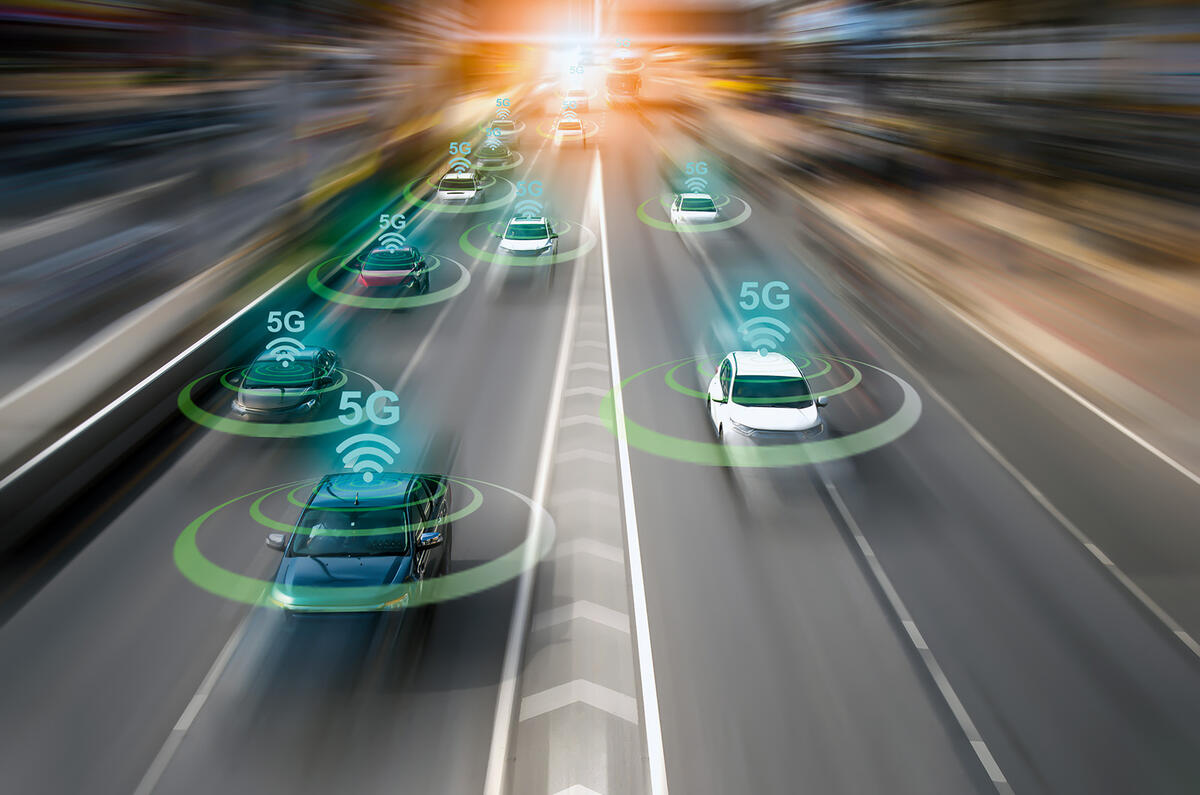What is 5G? Will it merely improve smartphones a bit and maybe in-car infotainment, or is there more than that?
Hopefully the latter, simply because 5G is a superfast communications protocol that’s likely to have far-reaching implications for many things vehicle related, especially safety-critical driver assistance systems.
One of 5G’s biggest strengths is low latency, which simply means less delay between a command being given and received. In human terms, that could mean the time between seeing an obstacle and hitting the brake pedal. In data terms, the 20 milliseconds for 4G drops to between one and five milliseconds for 5G. That’s virtually instantaneous. The latency in human reaction time is around 200 milliseconds, so there’s more chance of avoiding a collision if 5G is there to step in.
V2X (vehicle to anything else, such as other vehicles and infrastructure) has been the subject of research for some time. It allows vehicles to communicate with moving, fixed and temporary objects, warning a driver of what’s around the corner before it comes into sight. That could be roadworks, a pedestrian, an oncoming emergency vehicle or a broken down car.
Early efforts relied on standard wireless data transmission, using the same technology as a home wi-fi network. Problem is, its reliability would be about as good as that of, well, a home wi-fi network.
5G, on the other hand, was designed to be reliable for use with machines of all types, as well as to allow you to hear your mum properly when you phone her. It will hold up in busy urban environments and cope with objects moving at high speed, and it’s expected to be a major enabler for allowing autonomous vehicles to interact with each other and other things.
The 5GCAR project, led by telecoms giant Ericsson, concluded last year having demonstrated, among other things, how 5G could help with synchronising the speed of vehicles merging onto motorways – something human drivers are often bad at.
Intelligent and autonomous 5G-based features will take time to roll out, so roadside cameras will be used to allow the systems to identify and track vehicles that aren’t equipped with 5G and pass details of their speed, position and trajectory to those that are via a manoeuvre planning system. Other features trialled include a see-through function, where a car can receive data from the forward-facing cameras of those in front, giving its driver a real-time, unobstructed image of the road ahead.
Roadside sensors can also detect people walking out from a blindspot, such as a car waiting to turn right at traffic lights. The system can distinguish between a potential collision with a person and a non-critical situation, like a person who is on course but hasn’t quite arrived in the danger zone yet.
All of this would involve a vast amount of data transfer, and that’s where 5G also scores, because it’s 100 times faster than 4G. There’s still a long way to go but, after a long gestation, 5G rollout began in earnest last year and will hopefully keep up with evolving vehicle technology.
It'll drive you loopy
Driving an alternator to charge a battery uses energy and fuel. But with smart charging, the alternator kicks in only when the car is decelerating so no fuel is wasted. Problem is, the alternator may be generating charge faster than the battery can accept it.
To solve this issue, Mazda’s i-Eloop set-up uses a capacitor to hoover up all the charge and feed it directly to the electrical system. The i-Eloop has been around for years, but it’s now being used for the first time in the UK on the 1.5-litre Mazda MX-5.
READ MORE
Whatever next? The future of motoring
UK to develop 'world-leading' safety standard for autonomous cars
Under the skin: The numerous benefits of brake-by-wire







Join the debate
Add your comment
fghgjg ghjhj fgthtg trhtr
fghgjg ghjhj fgthtg trhtr trhtg ytjt mty
Nice post
Nice post
Thanks for sharing this
Thanks for sharing this